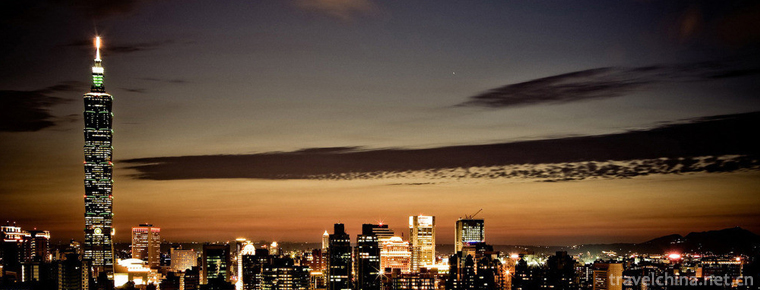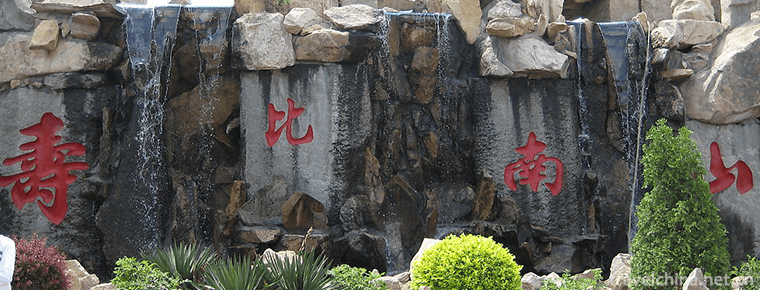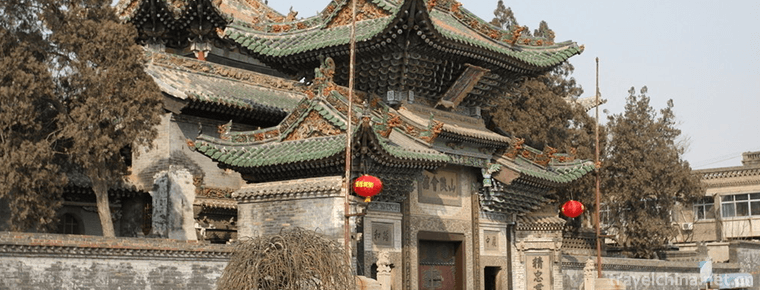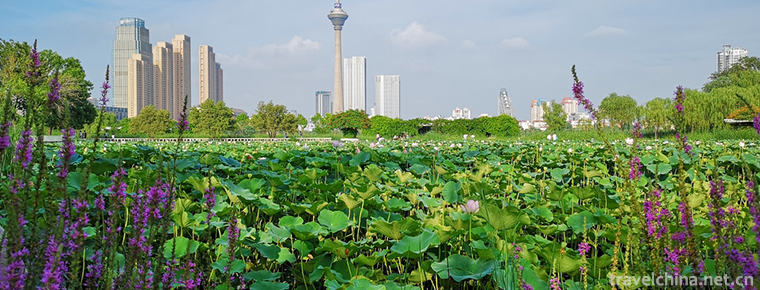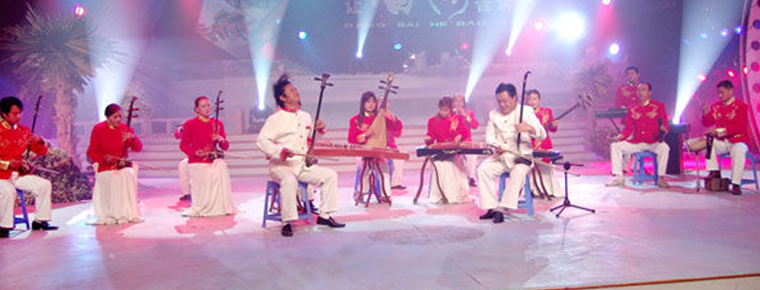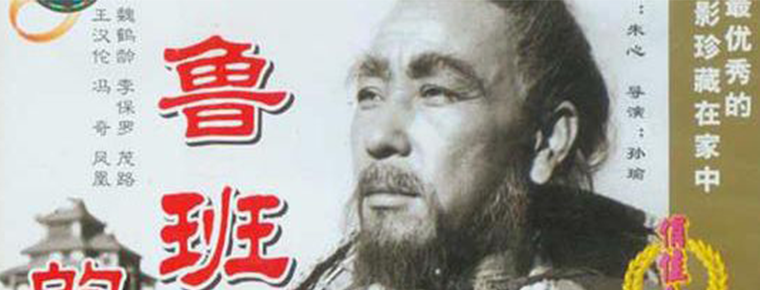Taiping Ancient Town Scenic Area
Taiping Ancient Town Scenic Area
Taiping Ancient Town is located at the junction of Gulin River and Chishui River, 35 kilometers away from Gulin County. Across the river from Xingmin Township in Xishui County, Guizhou Province, it is the east gate for Gulin to go out of Sichuan and enter Guizhou Province. It is a place where people from both provinces exchange markets, merchants and businessmen gather and distribute materials. It is known as the land and water wharf of Sichuan and Guizhou.
According to the Records of Gulin County, in the Warring States and Pre-Qin Dynasty, it belonged to the tribes of the ancient habitual state and the Yelang state, called Luohongkou. In the Ming Dynasty, Zhu Futong, a businessman from Taipingbao, Longnan County, Jiangxi Province, settled down here and took Hongkou as Lupingchang to commemorate Zhu Xi's preaching in Bailudong Academy. The descendants of the latter Zhu family were renamed "Taipingdu" and used to cherish their homeland "Taipingbao" till now.
The ancient town of Taiping has a deep red culture. In 1935, the Red Army of Chinese workers and peasants turned to war in Gulin County for 54 days. Among them, the main ferry crossings of the second and fourth crossings of Chishui are located in the ancient town of Taiping, leaving a large number of precious red relics and revolutionary relics.
Taiping Ancient Town is a unique mountain town in southern Sichuan. Ancient towns are built on hills. Most of the existing buildings are houses in Ming and Qing Dynasties. They adopt ancient dry-appended and suspended-foot buildings and other architectural frameworks, presenting the characteristics of "platform, suspension, fault, pick, shuttle and lean". The scenic spot is located in the junction of Yunnan, Guizhou and Sichuan provinces. Its cultural characteristics reflect the great integration of regional and national characteristics.
Taiping Ancient Town is a national AAAA tourist attraction, a famous historical and cultural town, a national patriotic education demonstration base, a key cultural relic protection unit in Sichuan Province, a patriotic education base in Sichuan Province, a national defense education base in Sichuan Province and a "top ten most suitable streets" in Sichuan Province.
History of scenic spots
According to the local chronicles of Gulin County, from the Warring States Period to the Pre-Qin Period, Taiping Ancient Town belonged to the tribes of the ancient eel Kingdom and Yelang kingdom. People called Taiping Town "Luohongkou".
During the Southern Expedition of Shu Han Dynasty, Zhuge Liang dispatched troops in this generation.
After the Ming Dynasty, Zhu Futong, a businessman from Taiping Fort, Longnan County, Jiangxi Province, changed the name of "Luohongkou" to "Lupingchang" in commemoration of Zhu Xi's preaching at Bailudong Academy. Later, in order to miss his hometown, the descendants of Zhu changed their name to "Taiping Fort" and continued to use it today.
In the late Ming and early Qing Dynasties, because of the traffic demand of Sichuan salt entering Guizhou, the waterway posts were set up here. Many salt merchants poured into Taiping to set up their names. Businessmen gathered and trade was busy. The Taiping Ferry is crowded with boats and trees, which make things flow smoothly. As a result, the ancient town gradually prospered.
In the 1920s and 1930s, Taiping Town has become a very famous trade hub in Sichuan, Guizhou and Yunnan.
In the twenty-four years of Minyuan (1935), the Red Army's Long March arrived at the ancient town of Taiping and began to cross Chishui four times.
In 1958, Taiping Town established the early Revolutionary Memorial Hall of the Long March of the Red Army in China.
In 1983, he was included in the series "Today's China Tourist World" and introduced to the world in seven languages.
In 1996, the Fourth Crossing Chishui Monument and Exhibition Hall of the Red Army of Workers and Peasants was built. It was named the Patriotic Education Base of Sichuan Province by the Sichuan Provincial Committee and the provincial government.
In June 2001, Taiping Town, where the exhibition hall is located, was approved and announced by the Ministry of Propaganda as the second batch of patriotic education demonstration bases in China.
In 2005, the commemorative scenic spots were included in 100 classic red tourism scenic spots and 30 high-quality routes.
In 2006, with the approval of relevant provincial departments, a project was set up to complete the renovation of monuments, the construction of 1800 square meters of memorial sites, the renovation and expansion of 2000 square meters of memorial halls, the construction of 3000 square meters of parking lots, the maintenance and renovation of Red Army Street, the construction of 3 kilometers of walking paths, the construction of four tourist public toilets, and the addition of 11 scattered Red Army sculptures and reliefs to the square outside the memorial hall.
In 2007, it was approved as a famous historical and cultural town by the Ministry of Construction, and it is one of the eight famous towns in Sichuan Province.
In 2009, the second phase of the Red Army Long March Fourth Crossing Chishui Taipingdu Memorial Site was implemented. The important nodes of "Red Army Aircraft Chamber", "Red Army General Political Department", "Command-in-Chief", "Red Army Hospital", "Red Army Bank" and the ancient buildings of 28000 square meters are renovated and protected, and the historical scenes are restored.
In April 2011, Taiping Ancient Town was named "Ten Most Suitable Streets and Lanes" in Sichuan Province.
In October 2012, Taiping Ancient Town was awarded National AAAA Tourist Scenic Spot.
On Dec. 5, 2016, the State Tourism Administration set off the most severe scenic spot in history, the "clean-up wind", and the ancient town of Taiping was seriously warned.
geographical environment
Location context
Taiping Ancient Town is located at the junction of Gulin River and Chishui River, 35 kilometers away from Gulin County. Across the river from Xingmin Township, Xishui City, Guizhou Province, Gulin is the east gate from Sichuan to Guizhou. The geographic coordinates of the town center are N28 08 and E106 02. As of February 2011, the scenic area covers 104 square kilometers.
topographic features
The ancient town of Taiping is high in the southeast and low in the northwest, tilting toward Taipingdu, which belongs to the deep hilly Valley landform. The highest elevation in the scenic area is 1100 meters, the lowest is 300 meters, and the relative elevation difference is 800 meters. The karst landform is obvious. Taiping is located in the mountains and rivers, and its streets are ladder-like. It has long been a place where business travelers from Sichuan and Guizhou gather and disperse. It is known as "small mountain city".
hydrographic features
Taiping Ancient Town is located at the confluence of Gulin River and Chishui River. Gulin River and Yanjing River, the main rivers in Gulin County, meet Chishui River, the main tributary of the Yangtze River.
Climate type
Taiping Ancient Town is a subtropical dry-hot valley climate, the valley is high temperature, low humidity, the region is rich in light and heat resources, the climate is hot and rainless.
Layout of scenic spots
Ancient towns are scattered by mountains and rivers. Most of the existing buildings are houses in Ming and Qing Dynasties, using ancient dry-appended and suspended-feet buildings and other architectural frameworks. The most distinctive structural layout of Long March Street, Red Army Street and Shunhe Street is based on natural mountains and rivers, and the streets and buildings stretch horizontally in zigzag shape according to the terrain. With the progress of society, high buildings rise along the Chishui River to form a new trade fair city. The 3-kilometer walk stone steps are connected in a "Z" shape with the new street. There are 2,000 square meters of Memorial Hall in Xinjie, 1,800 square meters of memorial plaza and 11 scattered Red Army sculptures and reliefs in the plaza outside the memorial hall.
Scenic spots
Eight scenes of Taiping
The folkways and customs of the old street in Taiping ancient town are simple. In the old days, there were eight peaceful scenes, namely, smoke and rain in Jiuxi, Xiaodu in flood, mud in spring swallow, glorious lights, sunset at camp top, fishermen fishing, rhinoceros watching the moon and Eagle stone memorial.
Main attractions
The main scenic spots are the Museum of Red Army's Long March Sidu Chishui, the Monument of Taiping Ferry, the Underground Party Activity Room, the Red Army Aircraft Important Site, the Red Army Temporary Hospital Residence, the Door Plate, the Red Army Cooking Class Site, the Red Army Bank Exchange Office, the Red Army Corps Residence Site and the Red Army General Command Residence.
The Fourth Cross Chishui Museum of the Long March of the Red Army in Gulin County
The Museum of Four Crossing Chishui of the Long March of the Red Army in Gulin County is a national demonstration base for patriotism education. Taiping Ancient Town, 34 kilometers east of Gulin County, Sichuan Province, covers an area of 6,000 square meters, with an exhibition hall area of 1,600 square meters.
The Red Army Four Crossing Chishui Taipingdu Exhibition Hall was built in 1958, formerly known as the Taipingdu Long March Memorial Hall. In 1975, it was renamed the Four Crossing Chishui Taipingdu Exhibition Hall by the Chinese Workers and Peasants Red Army. In 2001, it was named "National Patriotic Education Base" by the Ministry of Propaganda. In 2005, it was designated as one of the 100 classic red tourism scenic spots in the country. In April 2008, it was of The main exhibition is about 200 precious revolutionary relics, such as Red Army weapons, seals, medical books and slogans, left by Gulin during the Long March of the Red Army. There are 13 exhibition rooms in the museum, which are divided into six parts, reflecting the whole process of the Red Army's Long March crossing Chishui from January 19 to March 22, 1935. Under the personal command of Comrade Mao Zedong, the Central Red Army entered Gulin County three times for a period of 54 days, and the activities of guerrillas and Gulin Underground Party in southern Sichuan.
In 2011, the exhibition hall of the Red Army's Four Crossing Chishui Taipingdu was officially renamed as the Four Crossing Chishui Museum of the Long March of the Red Army in Gulin County after the approval of document No. 47 of the Sichuan Cultural Relics Administration.
Long March Street
Changzheng Street is located in the center of the ancient town. Most of the wooden houses were built in the late Qing Dynasty and the early Republic of China. The length of the old street is about 500 meters. It combines the architectural style of Jiangxi and the architectural elements of folk houses in southern Sichuan. Most ancient towns in China have relatively flat terrain, but the Long March Street is built step by step along the ridge, with a drop of nearly 100 meters from top to bottom and hundreds of steps. Its buildings are scattered in different places. There are Comrades Mao Zedong, Zhu De and Zhou Enlai's rest places, 87 Red Army sites such as the former garrison sites of the First, Third and Fifth Legions of the Red Army, the Red Army Provisional Hospital and the Soviet Provisional Bank.
- Fruit-sharing venue
The fruit-dividing venue is located in front of Rongshengtong Salt Number Court. Rongshengtong Salt Number was built at the end of Qing Dynasty. It is a transit station for Sichuan Salt to Guizhou, and is an important relic of ancient salt road. When the salt road was prosperous, there were eight salt names in the town. Now the store names are well preserved, such as Hengyan salt, Sanyiheng salt, Deqianyu salt, Rongshengtong salt and so on. When the Red Army marched to Chishui on the 4th crossing to Taipingdu, the confiscated property of Zhu Yisheng, the landlord, was distributed to the masses. The Rongshengtong Salt was also Chairman Mao's residence. After liberation, the first memorial hall of the Long March of the Taipingdu Red Army was built here.
- Residence of the Command-in-Chief of the Red Army
The General Command of the Red Army is located in Changzheng Street, Taiping Ancient Town. It is a large temple in Taiping Ancient Town. During the four crossings of Chishui River, it can overlook the whole battlefield of Chishui River and the highlands on the other side. Therefore, it is set up as the General Command. The house consists of two parts: the bungalow is where Ye Jianying, Zhou Enlai, Liu Bocheng and Zhu De live; the attic is a three-storey wooden suspension tower; and the highest logistical leadership and command organization, namely the Red Army headquarters. All orders directing the Red Army's military operations are issued here. At that time, the Commander-in-Chief of the Red Army was Zhu De, Chairman of the Central Reform Military Commission, Zhou Enlai, Chief of Political Affairs, and Liu Bocheng, Chief of General Staff.
- Residence of the General Political Department of the Red Army
The General Political Department of the Red Army is located in Changzheng Street, Taiping Ancient Town. It is a wooden structure building in the late Qing Dynasty and the early Republic of China. The blurred red mark on the door was left during the Cultural Revolution. The main function of the General Political Department is to manage the work of the Party in the army and organize and implement political work so as to continuously improve the combat effectiveness of the army and ensure the completion of combat, training and other tasks. Wang Jiaxiang was then director of the General Political Department of the Red Army.
Underground Party Activity Room
The Underground Party Activity Room is located in Changzheng Street, Taiping Ancient Town. It is the old site of Gulin Underground Party Activity. It took 72 days for the Red Army to cross Chishui, of which 54 days were spent in Gulin County. A large number of workers and peasants joined the Red Army. According to statistics, more than 800 people in Gulin joined the Red Army. In that year, the underground party held a meeting in this house to discuss the revolutionary situation in Gulin and other activities.
Taiping Temple
Taiping Temple was built at the end of Ming Dynasty and was expanded from the Yuweng Temple. The temple is made of brick and wood. In the main hall of the temple, Taigong Jiang was sculpted. On both sides, there were stone carvings of Yuyue Longmen and Shuiman Jinshan. In the early period of the Cultural Revolution, during the movement of "breaking the four old and building the four new", the temples were destroyed. The Buddhist statues of Sakyamuni Buddha, Guanyin Bodhisattva and Tibetan Bodhisattva in the temples were invited to Miaoer Mountain by Chen Dezhou, the local people, to build a shed on the wasteland and cover up the Buddha statues so as to preserve them. In January 1990, Chen Dezhou, Fan Yingfen and other believers set out to build a temple on the Changzheng Orchard Hill of Miaoer Mountain. At that time, the temple was called Taiping Lingxian Temple. The temple has three halls, namely, Guanyin Hall, Guansheng Hall and Gezang Hall. There are also three houses and one Zhaitang, with compartments on both sides of the hall. It was renamed Taiping Temple in 2001.
- Red Army Provisional Hospital
The Red Army Provisional Hospital is located in Changzheng Street, Taiping Ancient Town. It used to be Zhu House with stone courtyard gate. There is a well in the middle of the courtyard, and the back door is connected with Linlang Road. It is not far from the confluence of Chishui River and Gulin River to facilitate the timely delivery of wounded Red Army soldiers to the area for treatment. There are many temporary hospitals like this in the upper and lower streets.
- Eagle Stone
Eagle Stone is located in the ancient town of Chishui River, because before liberation there were often Eagles perched on the stone, people called it Eagle Stone. When the Red Army crossed Chishui for the second time, it was a lush forest opposite, which was conducive to the Red Army's concealed operations. The soldiers of the Red Army took local materials and weaved bamboo into strong ropes. One was tied to a fir tree on the opposite hill and the other was tied to an eagle stone. Thus, four boats were connected. A ladder was erected between the boat and the door board collected from the common people. On the stairs, the Red Army soldiers crossed it. When the large forces crossed the Chishui River, the guards and local boatmen quickly cut the rope, evacuated the ships and door panels, cut off the trail of pursuing the enemy, and won the victory of the Taiping blockade battle.
Jiuxikou Monument
The Jiuxikou Monument is about 2 kilometers away from the Taiping Ferry Monument. The Jiuxikou Ferry was one of the places where the Red Army crossed the Chishui River. The inscriptions were engraved on the rocks, more than 2 meters long and more than 1 meter wide. Both monuments are listed as "key cultural relics protection units in Sichuan Province".
The old site of the kitchen house
The old cookroom is located in Changzheng Street, Taiping Ancient Town. During the Red Army's stationing period, the cookroom classes set fire to cook to ensure that the Red Army can eat food. There are six such old sites in Taiping Town.
The old site of the Fifth Legion
The former site of the Fifth Legion is located in Changzheng Street, Taiping ancient town. The Red Five Legion is the main force of the Chinese Red Army of Workers and Peasants. It is the best equipped and strongest position fighting force in the whole Red Army. It has been shouldering the most arduous task of guarding during the whole Long March process. It has made outstanding contributions to covering the whole army, especially the transfer of the central government at the beginning of the Long March. At that time, the Red Fifth Army served as the guard of the Fourth Crossing of Chishui, Dong Zhentang, then the head of the Red Fifth Army Corps, and Li Zhuoran, the political commissar.
Tourism information
Famous specialty products
Taiping ancient town has Xiantan wine, Gulin spicy chicken, Gulin old bacon, Gulin hand-made noodles, medlar wine, cowhide tea and other famous specialties.
Traffic information
1. Luzhou Xuyong (High Speed) - Gulin Deyao Town - Huangjing
2. Luzhou-Hejiang-Chishui River Estuary (Shizhangdong) - Taiping Ancient Town-Huangjing
3. Xuyong (Yufu Ancient Town) - Gulin Arrow Bamboo (Dahedong Scenic Area) - Dazhai (Eco-tourism Park) - Osmanthus Flower Township - Huangjinglaolin - Gulin County Town - Taiping Ancient Town (Sidu Chishui Memorial) - Erlang (Meijiu River Scenic Area) - Xishui - Hejiang - Luzhou
4. Luzhou-Hejiang Yaoba Ancient Town-Chishui Lianghekou (Shizhangdong) - Taiping Ancient Town - Huangjinglaolin - Osmanthus Township - Dazhai (Ecotourism Park) - Arrow Bamboo (Daheidong Scenic Area) - Luzhou
5. Luzhou-Hejiang Yaoba Ancient Town-Chishui Lianghekou (Shizhangdong) - Huangjinglaolin - Deyao Town - Gulin County Town - Taiping Ancient Town (Sidu Chishui Memorial) - Erlang (Meijiuhe Scenic Area) - Xishui - Hejiang - Luzhou








-
Taipei 101 building
Taipei 101 Building, formerly known as Taipei International Financial Center.
Views: 265 Time 2018-10-12 -
Longkou Nanshan Scenic Area
Nanshan tourist scenic spot is located in the beautiful scenery of Lu Shan in Longkou City, Yantai City, Shandong province. The scenic spots of Nanshan Temple.
Views: 116 Time 2018-12-08 -
Taimu Mountains
Taimu Mountain is located in the northeast of Fujian Province. It is 45 kilometers south of Fuding City from the urban area..
Views: 191 Time 2018-12-08 -
Xinglong mountain
Xinglong Mountain is the nearest National Natural Forest Reserve to Lanzhou City. It is located five kilometers southwest of Yuzhong County, Lanzhou City, 60 kilometers away from Lanzhou City.
Views: 172 Time 2018-12-24 -
Du Shoutians former residence
Du Shitian's former residence is the old residence of Du Shitian, the emperor's teacher of the Qing Dynasty, as well as the old residence of many famous officials of the Du family. Located in Binzhou .
Views: 145 Time 2019-01-08 -
Shanshan guild hall
Shanxi-Shaanxi Guild Hall is the place where Shanxi and Shaanxi merchants and businessmen associate with each other and worship gods. It combines exquisite architectural.
Views: 168 Time 2019-02-08 -
Tianta Lake Scenic Area
Tianta Lake Scenic Spot is located in the south of Tianjin City, close to the water park scenic spot, is the main attraction of Tianjin Radio and Television Tower. Tianta is the Tianjin Radio and Tele.
Views: 207 Time 2019-02-21 -
Major tune
The major tune was originally called "drum tune". Varieties of Quyiqu. It was first prevalent in Kaifeng, Henan Province, and then spread to Luoyang, Nanyang and other places..
Views: 361 Time 2019-04-23 -
Legend of Luban
productivity and the change of production tools have created conditions for the improvement of technology..
Views: 238 Time 2019-05-15 -
Xiaoxiangling scenic spot
The synonym Xiaoxiangling generally refers to Xiaoxiangling scenic spot.
Views: 158 Time 2020-10-16 -
medical and health work
By the end of 2019, there are 2139 medical and health institutions with 19943 beds. At the end of the year, there were 14351 technical personnel in hospitals and health centers, including 4839 licensed doctors and 6767 registered nurses. The numbe.
Views: 346 Time 2020-12-18 -
Climate in Guangan
Guang'an City belongs to the humid monsoon climate zone of middle subtropical zone, with mild climate and suitable for agriculture in four seasons. In summer, it is affected by the Pacific subtropical high, the Qinghai Tibet high, the plateau fluctuation, and the southwest w.
Views: 182 Time 2020-12-19
